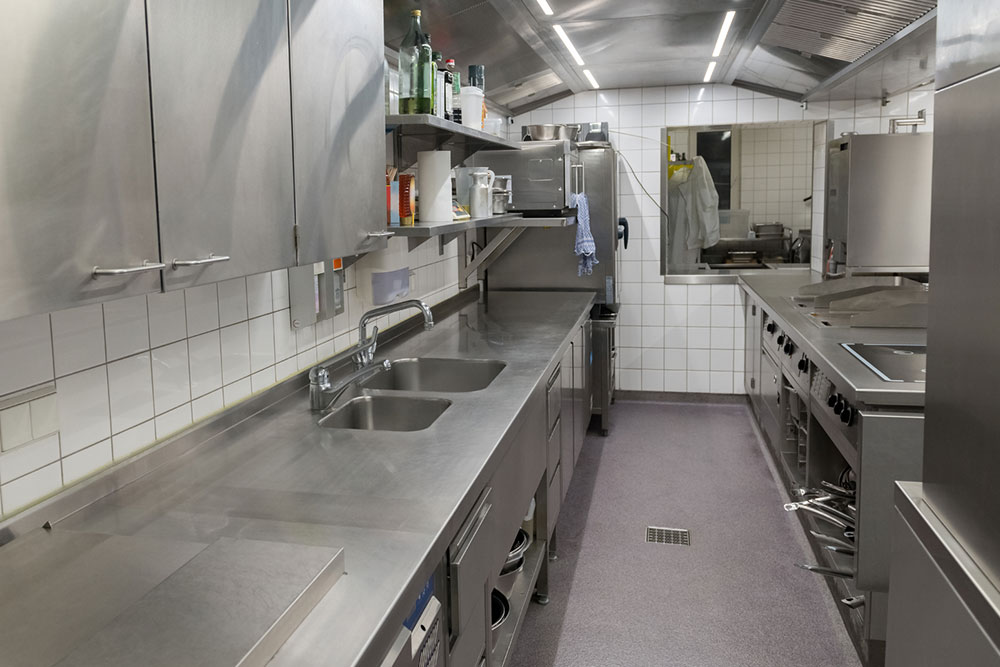A guide to essential restaurant equipment

Starting a new restaurant can be exciting and overwhelming at the same time. One will need to be aware of the ins and outs of a hospitality business and how to run a restaurant successfully. One of the most important things in any restaurant is the tools of the trade, i.e., kitchen equipment. To simplify it for new restaurant owners, here is a brief guide on essential restaurant equipment a professional kitchen requires.
Ranges and ventilation systems
A range is an understandably crucial piece of restaurant equipment that one would need to get. It is the most important piece of cooking setup that will enable chefs to control the heat on dishes and cook with even heat. Ranges are available in two different types: gas ranges and electric ranges. A restaurant can choose either type based on their requirements. Here are a few aspects to consider about both types of ranges when choosing one:
Gas ranges
Gas ranges provide chefs with more control over the cooking temperature. They also work a lot faster than electric ranges. They are slightly harder to clean and maintain, but their repairs also cost relatively less.
Electric ranges
Electric ranges are easier to use and clean. Plus, they also eliminate the risk of gas leaks or fire hazards. They also help ensure that the food gets cooked evenly.
Along with ranges, a restaurant would also need a proper ventilation system to ensure that cooking fumes have a way of escaping. When choosing a ventilation system for their restaurant, one would need to consider the size and efficiency of the system.
Refrigerators
While restaurants make fresh food every day, refrigerators are important to store produce, poultry, and other raw ingredients. It is also needed to make any kind of desserts. Refrigerators are a necessity as per the food safety codes, which require a restaurant to store its food at a minimum temperature. When buying a refrigerator, the restaurant owner will need to consider a few factors. Firstly, they must determine which type and size of refrigerator to choose. For instance, if they have enough space and requirements, they can purchase walk-in refrigerators. If not, they can simply choose a reach-in fridge. Along with that, the restaurant owner must also consider buying a freezer for storing foods and raw materials at an even lower temperature. Freezers are also available in different types and sizes, such as chest freezers, walk-in freezers, and reach-in freezers.
Ovens
Ovens are available in numerous sizes and types. So, before purchasing one for their restaurant, the owner must determine how much they are going to use it. If their restaurant’s menu is focused on baking or oven-cooking, they may need a big oven to process multiple orders. For instance, if pizzas are among the main orders for the restaurant, they would definitely need a substantially sized, well-functioning oven. In fact, they can simply invest in a good pizza oven. Besides that, there are other types of ovens that restaurant owners can choose from, including convection ovens, commercial ovens, combination ovens, and conveyor ovens.
Prep counters and cutting boards
The chefs would also need prep counters to work on the food. To maintain the highest level of hygiene and cleanliness for the food being prepared, it is important to choose the right material for prep counters, which is almost always stainless steel. Stainless steel is easy to clean and not porous. So it will not absorb and harbor any kind of bacteria. Plus, stainless steel is also durable and highly resistant to corrosion, letting it last for a long time. The one material to completely avoid for food prep counters is wood. Wood is very porous, hard to clean, and gets easily damaged by water. Along with prep counters, chefs would also need good cutting boards for their chopping work. For the best results, it is better to get plastic cutting boards, particularly, the ones made from high-density polyethylene. For the same reasons as above, wood is not a good choice for cutting boards.
Food processors
Food processors make things a lot easier for chefs. They allow them to quickly chop, grind, dice, and puree the food. There are also various types of food processors available, which restaurant owners can choose from. These include:
Batch bowl processors
These are small-sized processors that allow only a single batch of food to be processed at a time. However, they are also very versatile and allow one to choose how they want to cut the food.
Continuous feed processors
These food processors are ideal for big portions of food. They allow one to keep adding more food to the processor while it is still running and processing the food already added.
Buffalo choppers
These choppers are ideal for tough food items such as meat.
Combination processors
These processors are in between batch bowl processors and continuous processors. They allow one to keep adding more food items in, while also removing single batches of processed food.
Storage racks
Storage racks are required for proper storage of utensils, vessels, and other equipment. Since the storage rack is likely to hold all the large vessels too, it is important to choose one that is durable and long-lasting. Some of the best choices for storage racks would be stainless steel, polymer, and chrome wire.





